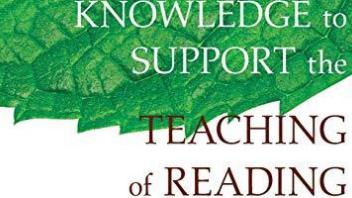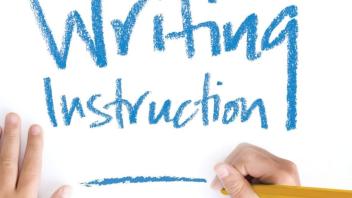Featured booklists
Themed Booklist
Teaching Reading
Themed Booklist
The Cognitive Science of Reading
Themed Booklist
Reading Motivation and Reading Aloud
Themed Booklist
Teaching Writing
Themed Booklist
Learning Differences
Themed Booklist
In the Classroom: Teaching Children on the Autism Spectrum
Themed Booklist
About Autism: Books for Parents and Educators
Adult Education Books

How do children develop reading skills — and when these skills don’t develop typically, how can we best identify challenges and intervene? Find the answers in this comprehensive volume on dyslexia: its root causes, the most effective methods of diagnosis and treatment, and the sociopolitical factors that affect intervention. This book brings together contributions from more than 50 top researchers and practitioners, who share their invaluable perspectives, findings, solutions, and questions to shape future dyslexia research.
Dyslexia: Revisiting Etiology, Diagnosis, Treatment, and Policy

Explicit instruction is systematic, direct, engaging, and success oriented — and has been shown to promote achievement for all students. This highly practical and accessible resource gives special and general education teachers the tools to implement explicit instruction in any grade level or content area. The authors are leading experts who provide clear guidelines for identifying key concepts, skills, and routines to teach; designing and delivering effective lessons; and giving students opportunities to practice and master new material. Sample lesson plans, lively examples, and reproducible checklists and teacher worksheets enhance the utility of the volume.
Explicit Instruction: Effective and Efficient Teaching

From one of the preeminent experts on reading and dyslexia, the most comprehensive, up-to-date, and practical book available on identifying, understanding, and overcoming reading problems — now revised to reflect the latest research and evidence-based approaches. Extensively updated information on helping both dyslexic children and adults become better readers, with a detailed home program to enhance reading.
Overcoming Dyslexia (2020 Edition)

A comprehensive source on young children’s development of writing that illustrates every concept with student examples. This book offers a detailed story of children’s development of writing, from scribbles to letters; from imaginative inventions to conventional spelling; and from enthusiastic utterances on paper to effectively structured compositions. Teachers will develop the skills needed to offer appropriate instruction and feedback for students at each point in the writing process.
The Beginnings of Writing

The 6+1 TRAIT model works by allowing teachers to pinpoint students’ strengths and weaknesses in ideas, organization, voice, word choice, sentence fluency, conventions, and presentation, and focus instruction. Like the groundbreaking guide for grades 3 and up (opens in a new window), this new book contains scoring guides, sample papers, and focus lessons for each trait, but framed to address K–2 teachers’ needs.
6 + 1 Traits of Writing: The Complete Guide for the Primary Grades

Firmly grounded in the authors’ Self-Regulated Strategy Development approach, which has been proven effective by two decades of research, these brief, powerful lessons will help transform struggling students into confident, skilled, and motivated writers. Teachers will get concise lesson plans they can use to easily supplement their existing writing curriculum.
Powerful Writing Strategies for All Students

This volume synthesizes current knowledge on writing development and instruction at all grade levels. Prominent scholars examine numerous facets of writing from sociocultural, cognitive, linguistic, neuroscience, and new literacy/technological perspectives. The volume reviews the evidence base for widely used instructional approaches. Issues in teaching specific populations — including students with disabilities and English learners —are addressed. Innovative research methods and analytic tools are explained, and key directions for future investigation identified.
Handbook of Writing Research

The Writing Revolution (TWR) provides a method of instruction that you can use across all subjects or grade levels. The model, also known as The Hochman Method focuses on specific techniques that match students’ needs and provide them with targeted feedback. There’s no separate writing block and no separate writing curriculum. Instead, teachers of all subjects adapt the TWR strategies and activities to their current curriculum and weave them into their content instruction.
The Writing Revolution

Whether they have learning disabilities or just need extra help, struggling writers can improve their skills dramatically if they get the detailed, explicit instruction they need. This practical guidebook shows elementary school teachers how to make this systematic instruction part of their classroom. Educators will find a wide range of specific strategies that include activities for every phase of the writing process, from brainstorming and goal-setting to revising.
Writing Better: Effective Strategies for Teaching Students with Learning Difficulties

Effective guidelines for teaching writing in grades K–12. Using classroom examples, the book identifies the components of a complete, high-quality writing program. Leading experts provide strategies for teaching narrative and argumentative writing; using digital tools; helping students improve specific skills, from handwriting and spelling to sentence construction; teaching evaluation and revision; connecting reading and writing instruction; teaching vulnerable populations; using assessment to inform instruction; and more.
Best Practices in Writing Instruction (Third Edition)

Learn why RTI is today’s best approach for preventing reading difficulties. For practitioners, the book provides a complete, evidence-based blueprint for using RTI and reading profiles in tandem to plan effective core literacy instruction and help struggling readers in Grades K-6, whether they have disabilities or issues related to experience (e.g., ELLs, children from poverty backgrounds). For researchers and policymakers, the book describes ways to help ensure higher reading achievement for every student, including improvements in core reading instruction, use of RTI practices and the Common Core State Standards, and teacher preparation.
The Power of RTI and Reading Profiles: A Blueprint for Solving Reading Problems

What are today’s best practices in early literacy instruction — and what should schools and programs focus on in the near future? More than 20 experts in early literacy research explore the answers in this essential volume for program directors, administrators, and curriculum developers. Using the landmark National Early Literacy Panel (NELP) Report (opens in a new window) as a starting point, this accessible book breaks the report down into key takeaways, recommends future directions in policy and practice, and tackles emerging issues and new research not addressed in the NELP report.
Early Childhood Literacy: The National Early Literacy Panel and Beyond

Today’s classroom is more diverse, more inclusive, and more plugged into technology than ever before. And it’s led by teachers under enormous pressure to help decidedly unstandardized students meet an expanding set of rigorous, standardized learning targets. In this updated second edition of her best-selling work, Tomlinson offers these teachers a powerful and practical way to meet a challenge that is both very modern and completely timeless: how to divide their time, resources, and efforts to effectively instruct so many students of various backgrounds, readiness and skill levels, and interests.
The Differentiated Classroom: Responding to the Needs of All Learners

A practical guide to help K–12 students enlarge their vocabulary and get involved in noticing, understanding, and using new words. Grounded in research, the book explains how to select words for instruction, introduce their meanings, and create engaging learning activities that promote both word knowledge and reading comprehension. This updated edition includes chapters on vocabulary and writing; assessment; and differentiating instruction for struggling readers and English language learners, including coverage of response to intervention (RTI). There are also expanded discussions of content-area vocabulary and multiple-meaning words.
Bringing Words to Life, Second Edition: Robust Vocabulary Instruction

Neuropsychologist Willingham describes the incredibly complex and nearly instantaneous series of events that occur from the moment a child sees a single letter to the time they finish reading. The book addresses reading comprehension (from reading for understanding at early levels to inferring deeper meaning from texts and novels in high school), the connection between reading and writing, and the important role of motivation. Willingham also explores the effects of technology on learning to read and reading.
The Reading Mind: A Cognitive Approach to Understanding How the Mind Reads

Hirsch draws on recent findings in neuroscience and data to provide new evidence for the argument that a carefully planned, knowledge-based elementary curriculum is essential to providing the foundations for children’s life success and ensuring equal opportunity for students of all backgrounds. In the absence of a clear, common curriculum, Hirsch contends that tests are reduced to measuring skills rather than content, and that students from disadvantaged backgrounds cannot develop the knowledge base to support high achievement.
Why Knowledge Matters
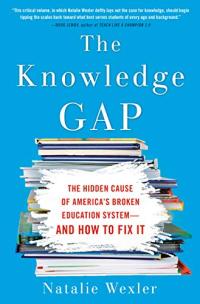
Cognitive scientists have known for decades that the most important factor in comprehension isn’t a set of generally applicable skills; it’s how much background knowledge the reader has about the topic. And yet, in most American elementary schools, teachers are not given the training and support they need to provide deep, rich content — about history, social studies, science, language and the world around them. In this book, education journalist makes the case for bringing content knowledge back into classrooms.
The Knowledge Gap

This 2018 revised edition provides a collection of tests for the comprehensive assessment of skills related to reading. These assessments can help teachers identify why a student is having reading difficulty and determine what the next step in instruction should be to remediate that difficulty. The assessments are intended to assist the teacher in determining the instructional needs of all students and in monitoring progress throughout the course of instruction
Assessing Reading: Multiple Measures

Parents and educators have turned to this classic for more than three decades to help countless children become avid readers through awakening their imaginations and improving their language skills. This updated edition discusses the benefits, rewards, and importance of reading aloud to children of a new generation. Supported by the latest research and an updated library of book recommendations curated with an eye for diversity, the book offers proven techniques and strategies for helping children of all backgrounds and abilities discover the pleasures of reading and setting them on the road to becoming lifelong readers.
Jim Trelease’s Read-Aloud Handbook: Eighth Edition
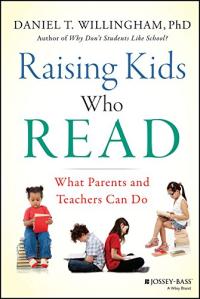
Neuropsychologist Willingham explains in depth the three key elements for reading enthusiasm ― decoding, comprehension, and motivation ― and provides practical tips for supporting all three from birth through adolescence. The book also includes Information on helping kids with dyslexia and encouraging reading in the digital age.
Raising Kids Who Read: What Parents and Teachers Can Do
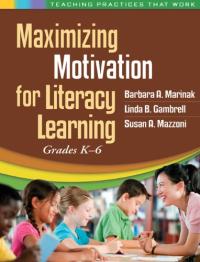
Discover a wealth of concrete ways to promote children’s intrinsic motivation to read. The book provides 30 practical strategies and activities, such as “Citizen of the Month,” “High Five,” and “Your Life in Books” that are ready to implement in the K-6 classroom. Teachers get step-by-step instructions for creating a motivating classroom environment, nurturing children’s self-concepts as literacy learners, and fostering appreciation of the value of reading and writing. More than a dozen reproducibles include two helpful assessment tools.
Maximizing Motivation for Literacy Learning: Grades K-6

A guide to welcoming children — from babies to teens — to a lifelong love of reading, written by the editors of The New York Times Book Review. Divided into four sections, from baby through teen, and each illustrated by a different artist, this book offers ideas on how to develop rituals around reading, build a family library, or engage a reluctant reader. Themed book recommendations are also included.
How to Raise a Reader

Grounded in the latest neuroscience and behavioral research, and drawing widely from literature, this book explains the cognitive and social-emotional benefits of reading aloud. For everyone, reading aloud engages the mind in complex narratives; for children, it’s an irreplaceable gift that builds vocabulary, fosters imagination, and kindles a lifelong appreciation of language, stories and pictures.
The Enchanted Hour: The Miraculous Power of Reading Aloud in the Age of Distraction

This book offers creative strategies, tips, and activities to help young people discover — or rediscover — the joy and empowerment of reading.

